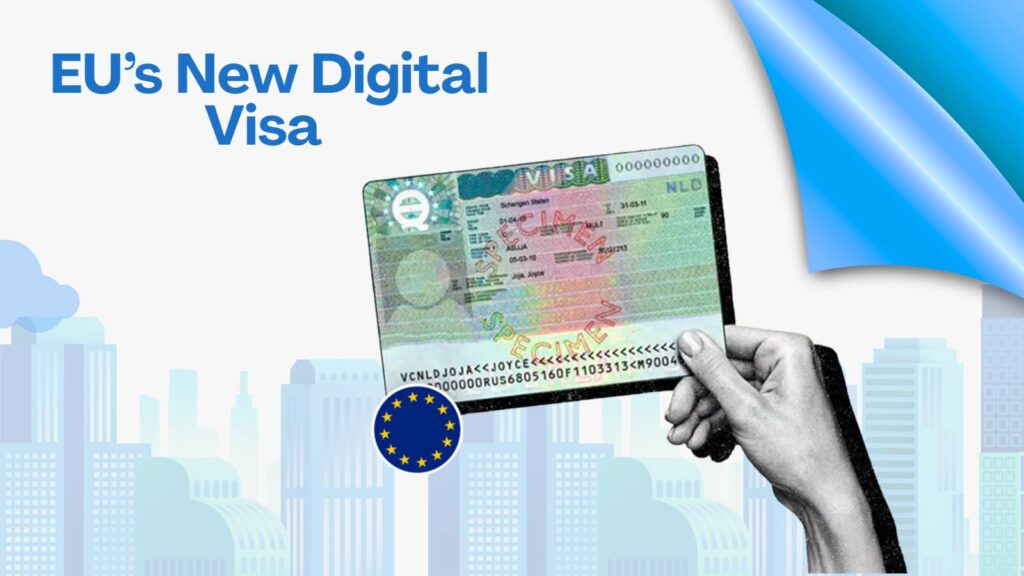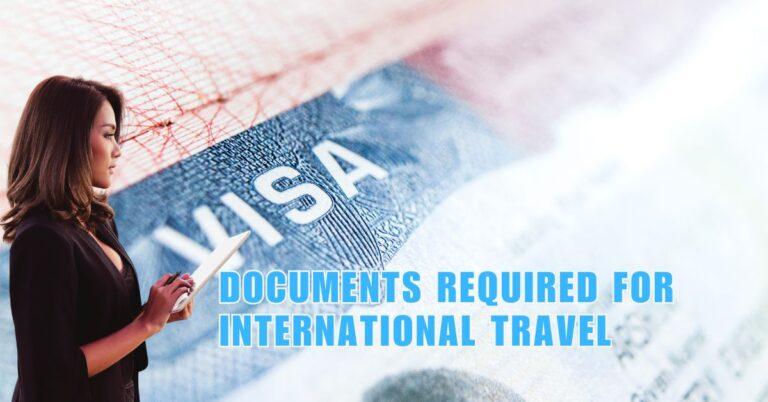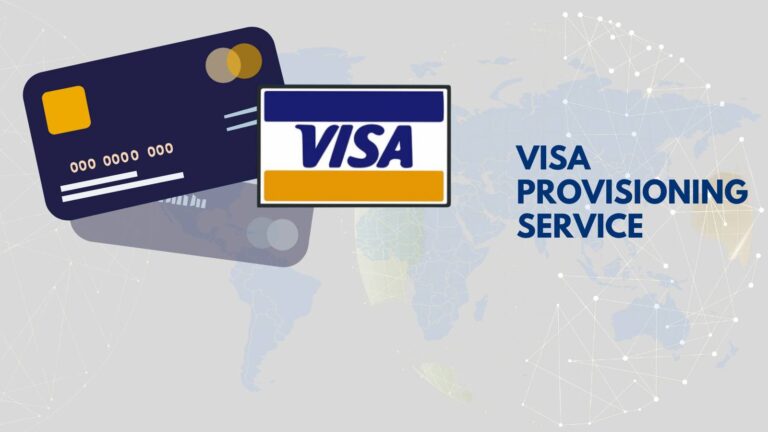European Union has officially moved towards a fully digital visa system, marking a historic change in how travel documents are issued, processed, and verified across the Schengen zone. The new system replaces the traditional paper-based visa sticker in passports with a secure, digital record stored in an online EU database. This change not only simplifies the application process but also enhances overall security, making it far more difficult for counterfeit visas to be used.
Visa Fraud Rings in the GCC: How Victims Are Falling Through Cracks in a Growing Scam Network.
For travellers from the Gulf region — including the UAE, Saudi Arabia, Qatar, Oman, Bahrain, and Kuwait — this change means a new set of procedures that will directly impact how they plan, apply for, and receive travel permission to EU countries. Those who frequently travel for business, leisure, education, or medical treatment will need to adapt to an entirely online system.
Understanding the EU’s New Digital Visa Rules is essential for avoiding travel disruptions in 2025 and beyond, especially as the EU continues to tighten border controls in line with global security trends.
Key Changes in the New EU Digital Visa Rules
Most notable transformation is the elimination of the physical visa sticker. Instead of pasting a sticker into a passport, the EU will issue visas electronically, linking them directly to the applicant’s passport number. This digital record will be stored in the EU’s centralised visa database, accessible to all Schengen member states’ border and immigration officials.
The Hidden Bureaucracy: Why UAE Residents Are Facing Schengen Visa Rejections
Applicants will complete and submit forms entirely online through an official EU visa portal. This reduces the need for in-person visits at the initial application stage and enables applicants to use e-signatures for authentication. However, biometric data submission — including fingerprints and facial photographs — will still be required at designated centres for identity verification.
This new approach creates uniform security screening across all EU countries, making it harder for fraudulent or duplicate applications to slip through the system. The digital structure also facilitates faster updates to visa status, allowing for real-time tracking and instant verification at border entry points.
Impact on Gulf Applicants
For Gulf travellers, these changes mean advance preparation will be more important than ever. Frequent business travellers may benefit from faster processing due to pre-existing biometric records, while first-time applicants will need to undergo the full biometric process.
Those accustomed to walking into a consulate or VFS Global office with a folder of printed documents will now need to digitally scan, upload, and format all their supporting paperwork. This requires familiarity with file formats (PDF, JPEG), resolution requirements, and file size limits.
Moreover, internet access and technical skills will be critical. Applicants who are not comfortable navigating online portals should consider seeking assistance from authorised travel agents or visa centres to prevent mistakes. With the Gulf being a hub for business and luxury tourism, ensuring a smooth transition to this digital system is crucial to avoid missed flights, delayed approvals, or rejected applications.
Required Documents for the New Digital Visa Process
Even though the application has gone online, the EU has not reduced its documentation requirements. Gulf applicants will still need to provide:
- Valid passport with at least three months’ validity beyond planned departure.
- Proof of travel itinerary, including confirmed flight bookings and accommodation details.
- Proof of sufficient financial means to cover the duration of stay (bank statements, salary slips, or sponsorship letters).
- Travel insurance covering the Schengen area, with a minimum of €30,000 coverage.
- For business travellers: an official invitation letter from an EU-based company.
- For students: an acceptance letter from a recognised educational institution in the EU.
These documents must be scanned in high resolution, ensuring legibility and compliance with size and format guidelines. In certain cases, they must also be translated into English or the official language of the destination country, using certified translation services. Poor-quality uploads or incomplete submissions may result in delays or outright rejection.
Application Process: Step-by-Step Guide for Gulf Residents
The new digital process will follow these steps:
1. Create an account on the official EU visa application portal.
2. Fill out the online form, ensuring every detail matches your official documents exactly.
3. Upload scanned copies of your passport, photos, and all required documents in the correct formats.
4. Pay the visa fee online using approved payment methods.
5. Book a biometric appointment at an authorised centre for fingerprints and digital photo capture.
6. Attend the appointment with your original passport and any additional documents.
7. Track your application status through the portal.
8. Once approved, your digital visa will be linked to your passport number and accessible by EU border control.
Biometric Data and Security Measures
Biometric requirements will remain an integral part of the EU’s New Digital Visa Rules. Applicants must provide:
- Fingerprints (10 digits).
- Digital facial photograph for identity confirmation.
These biometrics will be stored securely in the EU Visa Information System (VIS) for up to 59 months. Repeat applicants may not need to re-submit biometrics unless their passport changes or the retention period expires.
The EU has implemented advanced encryption protocols to ensure personal data cannot be accessed by unauthorised parties. Only approved visa officers and border control agents can retrieve this information. This not only protects against identity theft but also ensures faster clearance at borders.
Processing Times and Validity Changes
Under the digital system, processing times are expected to remain similar — around 15 calendar days for most applications. However, during high travel periods like summer or Christmas, delays may still occur.
For frequent travellers with a clean visa history, the EU may issue long-term multiple-entry visas valid for several years. The digital format allows border officials to instantly verify validity, reducing waiting times at checkpoints. This could be particularly beneficial for Gulf-based executives and entrepreneurs who frequently travel to Europe for meetings and trade fairs.
Costs and Payment Methods for Digital Visas
Visa fees remain unchanged:
- €80 for adults.
- €40 for children aged 6–12.
- Reduced or waived fees for certain categories (students, cultural exchange participants, researchers).
Payments must be made online via secure gateways, such as credit cards, debit cards, or other EU-approved methods. Gulf residents should ensure their bank cards are enabled for international transactions to prevent payment failures, as unsuccessful payments will pause the application process.
Common Mistakes to Avoid in the Digital Application
Typical mistakes Gulf applicants should watch out for include:
- Uploading low-quality or incomplete document scans.
- Mismatched names or dates between documents and application form.
- Submitting expired travel insurance policies.
- Skipping or missing biometric appointments.
To avoid these errors, applicants should double-check every step, maintain a personal checklist, and keep backup copies of all uploaded files in case re-submission is needed.
Tips to Ensure a Smooth Application Process
- Start your application at least six weeks before travel to allow for any unforeseen delays.
- Use certified translation services for any documents not in English or the destination’s language.
- Save all uploaded files on a secure device or cloud storage for quick access.
- Regularly monitor your application status and respond promptly to any additional requests from the EU visa office.
- Keep a copy of your biometric appointment confirmation to avoid missed slots.
How This Change Aligns with EU’s Border Modernization Goals
The EU’s New Digital Visa Rules are part of a broader border modernisation strategy aimed at improving travel efficiency and strengthening security. This initiative is closely tied to other upcoming systems, such as the European Travel Information and Authorisation System (ETIAS), which will become mandatory for visa-exempt travellers.
By moving to a digital framework, the EU reduces fraud risks, ensures real-time identity verification, and allows faster processing at entry points. For travellers, it means less paperwork, fewer physical visits, and better transparency in tracking applications.
Before applying, ensure all documents are prepared in advance, biometric appointments are booked early, and payment methods are ready for online processing. Familiarising yourself with the EU visa portal now will give you a head start once the system becomes mandatory.
FAQs
1. What do the EU’s New Digital Visa Rules change?
The EU’s New Digital Visa Rules replace the paper visa sticker with a fully digital record stored in the EU’s secure database. Authorities now link visas directly to your passport number, eliminating the need for physical stamps. You submit applications online and visit a visa centre only for biometric data.
2. When will the EU launch the new digital visa system?
The EU plans to roll out the digital visa system across all Schengen states in 2025. Each country may adopt it at slightly different times, so check your local EU consulate or the official EU visa portal for exact dates.
3. Will Gulf travellers still visit a visa centre?
Yes. You must visit a visa centre to submit your fingerprints and facial photograph if you are applying for the first time or if your previous biometric data has expired after 59 months. You can complete every other step online.
4. What documents must I prepare?
You still need the same documents as before, including:
- A valid passport (with at least three months’ validity after departure date)
- Proof of travel itinerary (flight and accommodation details)
- Proof of financial means
- Schengen travel insurance (minimum €30,000 coverage)
- An invitation or acceptance letter (for business or study)
Scan documents clearly and, if necessary, translate them into English or the language of your destination.
5. How do I apply for a digital visa?
You create an account on the EU visa application portal, complete the form, upload all required documents, pay the visa fee online, and book a biometric appointment if needed. Once approved, the EU links your digital visa directly to your passport for verification at the border.
6. How does the EU protect my data?
The EU encrypts all personal data, including biometrics, and stores it in a secure system that only authorised visa officers and border agents can access. This process reduces identity theft risks and speeds up border checks.
7. How much will the digital visa cost?
The EU keeps the fees the same: €80 for adults, €40 for children aged 6–12. Certain applicants, like students or cultural exchange participants, can receive exemptions or reduced fees. You must pay online using secure EU-approved payment methods.
8. How long does the digital visa take to process?
The EU typically processes visas in 15 calendar days. During peak seasons, such as summer holidays, you might wait longer. Frequent travellers with clean records may qualify for long-term multiple-entry visas.
9. What mistakes should I avoid?
Avoid uploading blurry or incomplete scans, mismatching details with your passport, submitting expired travel insurance, or missing biometric appointments. Double-check your application and keep a checklist to avoid delays.
10. How do Gulf travellers benefit from the new system?
Gulf travellers enjoy faster processing, less paperwork, and greater security. Frequent travellers can reuse stored biometrics, and border checks become quicker because officers verify visas instantly in the database.






